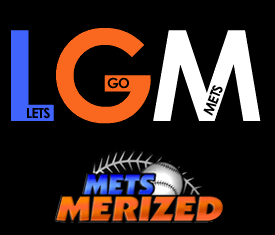
New York Mets starting pitcher Carlos Carrasco is preparing to make his sixth start of an injury-shortened 2021 campaign in Flushing. Needless to say, his first five trips to the bump have been an emotional roller coaster.
From making his debut on the night the Mets wore black uniforms for the first time in 10 years to surrendering a bunch of first-inning homers, Carrasco’s appearances have been anything but boring. On the surface, his tenure with New York hasn’t at all gone how anyone was hoping through his first 16 1/3 frames with the club. He’ll take the hill in Thursday’s series finale against the San Francisco Giants with an 0-2 record, an 8.82 ERA, and a -0.1 fWAR. He’ll also be looking to reverse the struggles he’s endured at home, which includes an opponent triple slash of .382/.432/.912 and a 14.14 ERA through seven innings of work.
In a month when just about everything has gone wrong for the Mets and their hopes of reaching the postseason continue dwindling down to zero, let’s look for a glimmer of optimism, shall we?
Carrasco struggled mightily in two straight starts between August 10 and August 15 against the Washington Nationals and Los Angeles Dodgers, tossing a total of just three innings while allowing a whopping 10 runs and 10 hits, including more homers given up (four) than strikeouts generated (three). That led to a less-than-stellar 30.00 ERA, but things looked up in his most recent start. Carrasco got the loss against Los Angeles on August 20 but allowed just three runs on five hits, one walk, and six strikeouts while lasting five innings (his longest outing so far this season). So, there are at least some good feelings from Cookie’s last start that he’ll hopefully carry over into Thursday night.
With such a small sample size from the veteran right-hander thus far, it’s tough to draw legitimate conclusions on his results, especially because there are some extremes taking place. For instance, with a career strand rate of 73.7%, he’s not likely going to be staying at the 55.0% clip he’s currently at. And, with a career homers allowed per nine innings rate of 1.07, it’s almost a lock that he won’t stay at his current 2.76 mark (we hope). One thing that is interesting, though, is what his pitch mix has looked like through his first five starts as a Met. Take a look at how his usage of the following four pitches has fluctuated over the past four seasons:

There’s quite a bit of variance going on here, and it also includes a declining sample size: 192 innings in ’18, 80 in ’19, 68 in ’20, and the 16 1/3 frames he’s tossed in ’21. That’s worth keeping in mind, too, but it’s hard to overlook the complete lack of usage that’s been happening with his curveball in the early going. Carrasco’s career usage of this pitch is 11.3%, and outside of his 4.2% usage rate in 2019, he’s never finished a year with that percentage dipping below 7.9%. And, if we look at how often he tossed his curveball from 2016 through 2020, it was above 10.0% four times in a five-year span.
What makes this such a head-scratching development at the start of his first campaign with the Mets is that historically, Cookie’s curveball has been his most effective pitch. The 38 wRC+ that offering has produced is the best of Carrasco’s arsenal, while the 1.9% walk rate, 45.6% strikeout rate, .473 OPS, and .097 ISO are also the best of all his pitches.
It’s not as if his curveball’s performance took a drastic dip in 2020, either. The opponent wRC+ of 63 is a little elevated when looking at his career numbers, but he paired it with a 51.2% strikeout rate and a 2.3% walk rate, making it his most effective out pitch by a significant margin. From the early results, it seems like the lack of curveball usage has impacted the performance of all the other pitches in his arsenal.
Here’s a quick look at the OPS and wRC+ for his four other pitches:

Is it as simple as just throwing his curveball more often to have some more success? Probably not. Avoiding this pitch as often as he has in the past could be because he’s not getting in front of hitters as consistency as he’d like. Carrasco’s first-pitch strike rate is sitting at 55.3%, which would be a career-low mark if sustained over a whole season, and the first time it’d be under 60.0% since 2011.
Or, it could just be a matter of him not having a feel for it yet as he continues building his pitch count to get deeper in games. This lack of curveball usage could be something and it could be nothing — time will tell as Carrasco continues taking the hill over the final month-plus of the season. It’ll be interesting to see what happens from here with this particular pitch and how his performance progresses as a result of how much or how little he throws it.















